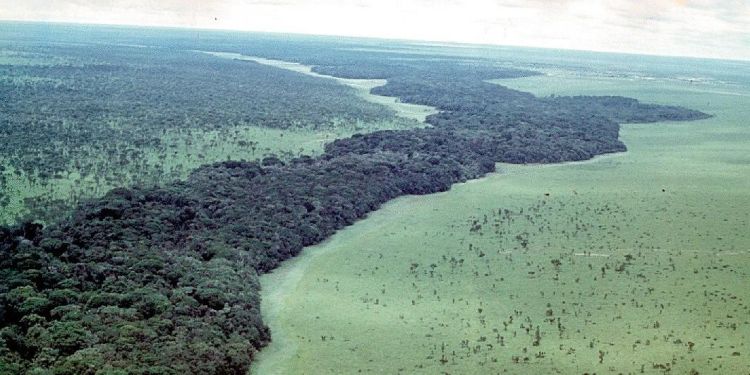Exploring fractal patterns in African ecotones

Studying fractal patterns in ecotones – the boundaries between different types of vegetation – could show us how plants are responding to climate change.
Complex, repeating patterns in nature, known as fractals, can be an indicator of climate, environment and biodiversity, according to a new study.
The research, which explores fractal patterns in African vegetation, shows that the patterns differ depending on the environment of the areas known as ecotones.
Ecotones, which literally means ‘tension between ecologies,’ are the boundaries between different types of vegetation, such as forest and savanna.
These areas are important for understanding how vegetation responds to climate change.
“Considering fractals when measuring ecotones has the potential to be a game changer in ecotone research and biodiversity monitoring of species compositions,” said lead author Dr Thina Ncube.
The study, published in the Annals of the Missouri Botanical Garden, is a collaboration between the University of Stellenbosch in South Africa, the University of Lincoln in New Zealand and Professor Jon Lovett from the School of Geography at the University of Leeds.
Measuring plant communities at scale
Helen de Klerk, who has studied African ecotones for many years, describes the reasons why they are so interesting.
“In Africa, there is a wide variety of ecotones and factors that drive them,” she said.
“To the south of the Congo Basin, the southern plateau hosts the savanna. Where the rivers of the Congo Basin start their journey north, they erode this savanna plateau into valleys cloaked with tropical jungle.
“When measuring the plant communities at fine spatial scales, we see sharp transitions between savanna and forest species.
“At coarser spatial scales, we see a broad ecotone from southern savanna to northern forest. Fractals help us understand these patterns and the forces that drive them.”

What do fractal patterns reveal about their environment?
Fractals are a remarkable feature of nature – complicated patterns that repeat across different scales. They’re found everywhere, from seashells to trees and mountains.
“Fractals are nature’s signature, shaping landscapes seen and unseen,” said Professor Cang Hui, Chair in Mathematical & Theoretical Physical Biosciences at the University of Stellenbosch.
“In Africa, they trace the shifting boundaries of plant biomes, drawn by climate, soil, and the human touch.
“Where rain differs sharply, the lines run straight—clear divides carved by contrast. But where the land shares a gentler gradient, the edges weave into fractal patterns. Intuitive, yet breathtaking in scale, these shapes reveal nature’s hand across an entire continent.”
Their complexity and variety makes them difficult to study on a large scale.
Professor Jon Lovett said: “Analysing these complex patterns requires a lot of data.
“We were fortunate to be able to use a recent compilation of more than 23,000 African plant species distributions that was put together by the Botanical Information and Ecology Network team in the United States to assess the impact of climate change on the biodiversity of protected areas.”
This project’s dataset was four times larger than previous analyses of patterns of African vegetation.
Including fractal patterns in the study of ecotones adds a new dimension to our understanding of biodiversity, spatial geography, and ecology, according to the researchers.




